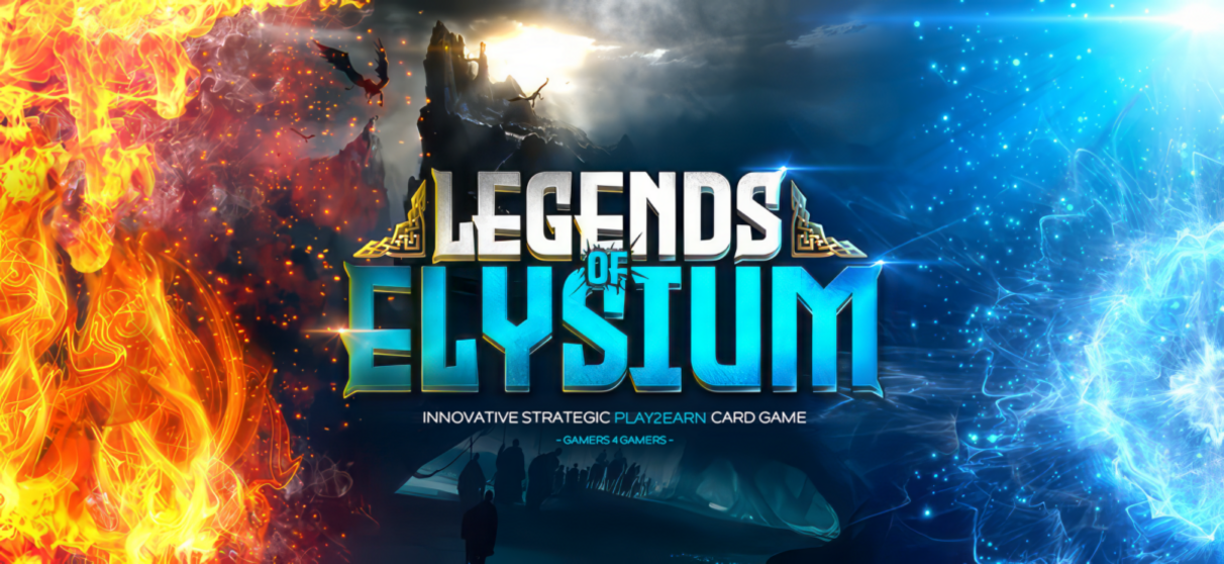Legends of Elysium Breaks New Ground in Online Gaming with Resurrection Gate NFT Collection Broadly Debated on Magic Eden
Web3 Takes the Reins: A Riveting Venture into Gaming with Legends of Elysium’s Resurrection Gate Collection
Web3, heralded as the internet’s next evolution, recently showcased its transformative power in the online gaming arena with the much-discussed launch of the Resurrection Gate Collection for Legends of Elysium (LoE). Far from just incorporating Web3 into its core technologies, this exciting venture took the innovative leap of intertwining the enthralling realms of trading cards and board games, providing a fresh and immersive gaming experience.
Brought forth by Elysium Studios’ pioneering crew, the Resurrection Gate Collection gives us a tantalising glimpse into the exhilarating future of gaming. This collection has challenged and reshaped traditional gaming conventions, signalling a ground-breaking era where digital and physical realities meld in unprecedented ways. To fully comprehend the innovative synthesis of trading card and board game traditions, we must look to the past.
The Arrival of a Ground-Breaking Era: The Resurrection Gate Collection
The Resurrection Gate Collection represents far more than a typical game launch; it stands as a bold declaration of the shifts occurring in the gaming industry due to Web3 technology. Utilising Web3’s decentralised and transparent environment, Elysium Studios has crafted a captivating ‘play and earn’ ecosystem. Gamers are now plunged into a gaming encounter that not only provides enjoyment but also offers the unparalleled opportunity to earn while they engage in leisure play.
This collection introduced players to unique digital assets, boasting high-end graphics akin to trading cards. These weren’t merely aesthetic in-game tokens. These were bona fide assets, verifiable on the blockchain, owned irrevocably by the player, and available for trade or sale—injecting a sense of tangibility into the gaming world that the LoE team has ingeniously reinvigorated. The integration of Web3 casts traditional game asset ownership in an entirely new light.
Play-and-Earn Revolution: Gamers as Profit Makers
The Resurrection Gate Collection has vividly illustrated what’s achievable at the zenith of the ‘play and earn’ model. For the first time, the captivating dynamics of trading cards and board games merged into one hybrid gaming format. A pioneering venture offering not just an engaging storyline for players but also avenues for financial opportunities.
Commanding the Vanguard of the Play-and-Earn Realm
Video gaming has traditionally been regarded as a pastime where players sink time and resources without expecting monetary gains. The Resurrection Gate Collection, however, has spearheaded a movement that challenges this view by advancing the ‘play and earn’ model and solidifying Web3 as the engine of this transformative shift. This model provides financial rewards. Thus, gamers accrue digital assets of real-world value as they navigate various gaming terrains, turning their gaming prowess into actual profit.
Ownership of digital assets is secured and made transparent by Web3’s supporting blockchain tech. This technology fosters a trust-free gaming environment, unlocking a myriad of opportunities for players to involve themselves intrinsically in the game’s economy—earning, trading, and profiting from their digital holdings, marking a seminal moment in the gaming industry’s historical progression.
Innovative Convergence: Fusing Trading Card and Board Game Elements
The Resurrection Gate Collection merges the charm of old-school gaming with the cutting edge of innovation. It deftly weaves together trading card game intricacies with the mechanics of board games, resulting in a gaming experience that feels both comfortable and excitingly new.
The Fusion of Two Gaming Realms
By combining the best of both trading card and board games, the Resurrection Gate Collection has delivered a unique gaming experience where strategy and luck coexist, fostering exhilarating escapades filled with the potential of unforeseen developments.
Each digital asset or card owned by players possesses distinctive attributes and abilities that can sway the game, echoing the strategic complexity of classic card games and compelling players to adapt their tactics dynamically.
In conclusion, the introduction of the Resurrection Gate Collection by Legends of Elysium manifests as incontrovertible evidence of Web3’s vast potential within the gaming sphere. Its pioneering amalgamation of card and board game dynamics, along with the ‘play and earn’ concept, signals a promising trajectory for the future of gaming, confirming that Web3 not only redefines but obliterates the known limits—catapulting the gaming experience into boundless new realms.
